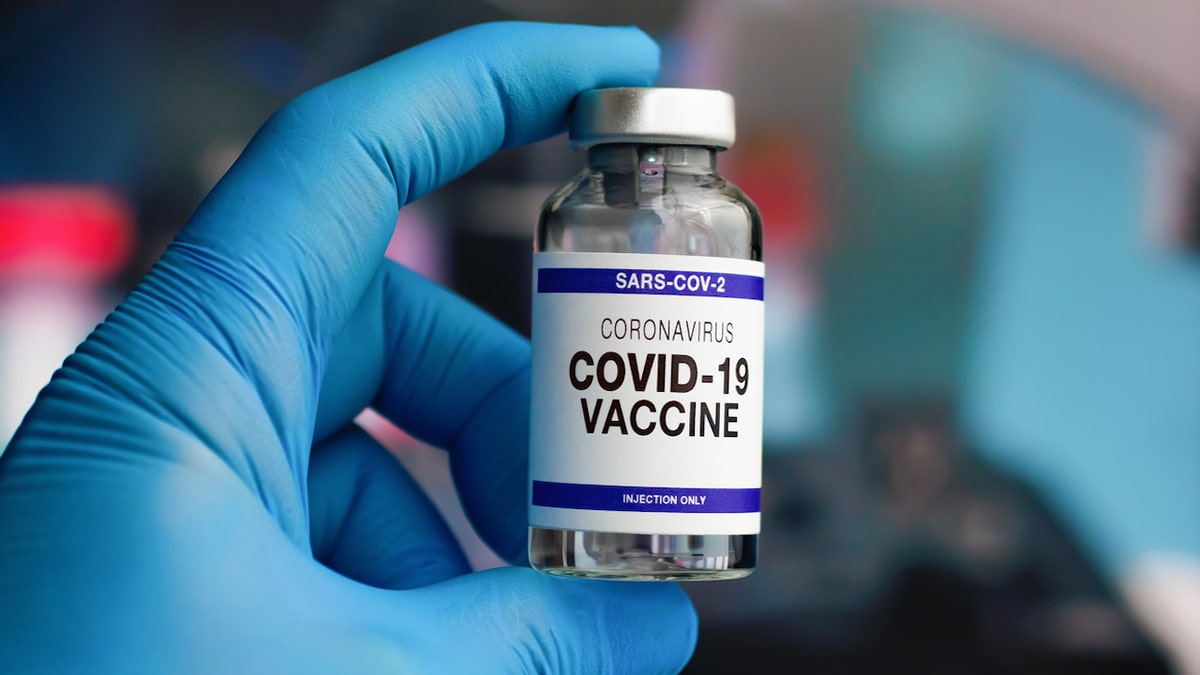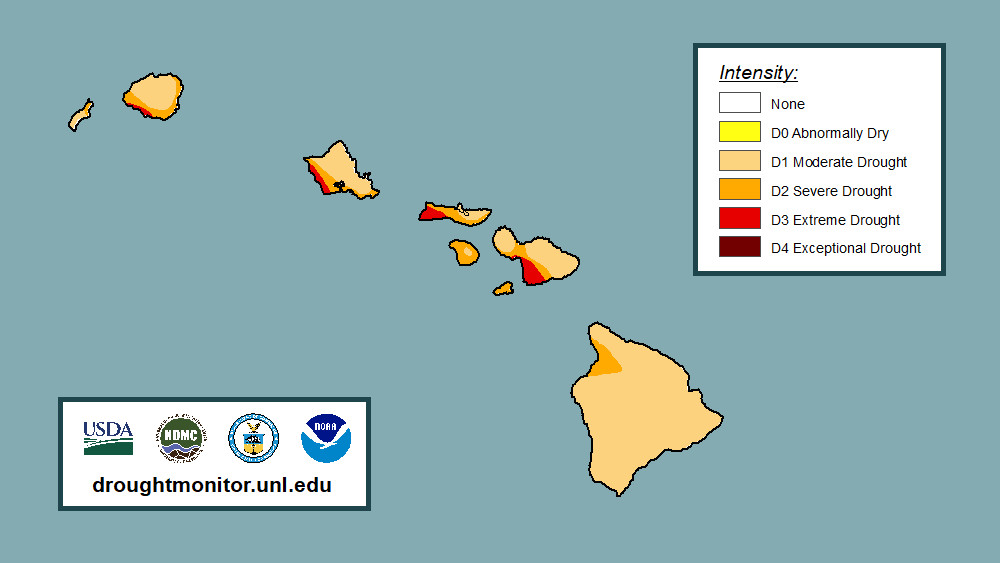Health
COVID-flu combo vaccine shows ‘positive’ results in phase 3 trials, Moderna says: A 'two-for' option

A combination COVID-influenza vaccine is apparently one step closer to hitting the market.
Moderna, which is developing the experimental vaccine, announced Monday that in phase 3 clinical trials, mRNA-1083 achieved a better immune response than other vaccines.
The combination vaccine includes mRNA-1010 (Moderna’s vaccine candidate for seasonal influenza) and mRNA-1283 (the company’s “next-generation COVID-19 vaccine candidate”), according to a press release from the company.
COVID AND FLU VACCINE RATES ARE DECLINING FOR US HEALTH CARE WORKERS, CDC REPORTS: ‘DISTURBING TREND’
“This data serves as a milestone for the industry’s pursuit of a flu and COVID-19 combination vaccine, which could change the way we manage the respiratory illness season,” Francesca Ceddia, chief medical affairs officer at Moderna, said in a statement to Fox News Digital.
A combination COVID-influenza vaccine is one step closer to hitting the market with this new announcement from Moderna. (iStock)
“With mRNA-1083, we may be able to not only offer the convenience of dual protection in a single shot, but we also may offer enhanced immunity compared to today’s standalone vaccines against the two respiratory diseases with the largest burden on health care systems,” she continued.
“Our hope is that with improved convenience comes improved compliance — helping to advance public health and lower rates of severe outcomes related to COVID-19 and flu.”
Moderna is the only company with a positive phase 3 flu and COVID combination vaccine, according to the company’s press release.
MANY YOUNG KIDS ARE NOT GETTING ‘LIFE-SAVING’ VACCINES
Moderna’s phase 3 trial was a randomized, double-blinded study that included two independent groups, each consisting of 4,000 adults.
One group included adults age 65 and older, who compared the experimental vaccine to Fluzone HD, an enhanced influenza vaccine, and Spikevax, Moderna’s currently licensed COVID-19 vaccine, the release stated.

Moderna announced Monday that in phase 3 clinical trials, mRNA-1083 achieved a better immune response than other vaccines. (REUTERS/Brian Snyder)
The second group, which included adults 50 to 64 years old, compared mRNA-1083 to Fluarix, a standard dose influenza vaccine, and Spikevax.
In both groups, mRNA-1083 resulted in “statistically significantly higher immune responses against three influenza virus strains (H1N1, H3N2, and B/Victoria) and against SARS-CoV-2,” according to the release.
“One can never predict rare adverse events.”
Amrie Grammer, a Virginia-based immunologist who previously worked with the National Institutes of Health, was not involved in the trial or the vaccine development but commented on the findings.
“Moderna’s results from their Ph3 NCT06097273 trial indicate that the dual SARS-CoV-2/influenza immunization is no less effective than two single shots,” Grammer told Fox News Digital.

In both groups, mRNA-1083 resulted in “statistically significantly higher immune responses against three influenza virus strains (H1N1, H3N2, and B/Victoria) and against SARS-CoV-2.” (iStock)
“This makes it simpler for more Americans to protect themselves from these two serious infections, especially those 65 and older who are most at risk for COVID- and flu- related deaths,” she continued.
“Ninety percent of deaths from COVID and 70% to 85% of deaths from the flu in 2023 were in those 65 and older.”
“This is especially good news for people who are wary of too many vaccines, even if they believe in them.”
Dr. Marc Siegel, clinical professor of medicine at NYU Langone Medical Center and a Fox News medical contributor, was also not involved in the trial but shared insights.
CDC RECOMMENDS ADDITIONAL COVID VACCINE FOR ADULTS 65 AND OVER
“Moderna has been working on combining a vaccine to fight both the latest coronavirus subvariant and the year’s flu strain,” he told Fox News Digital.
“The phase 3 clinical trials look excellent — safe and effective, with more antibodies made against both than when either immunization is given alone.”

Overall, the experimental vaccine showed an “acceptable tolerability and safety profile,” Moderna stated. (iStock)
The effectiveness is likely due to the vaccine “waking up” the immune system to both viruses at the same time, causing a stronger, more varied and more durable response, according to Siegel.
“This is especially good news for people who are wary of too many vaccines, even if they believe in them,” he said.
“The most commonly solicited adverse reactions were injection site pain, fatigue, myalgia and headache.”
“This shot creates a ‘two-for’ option and should be a useful tool, especially if primary care physicians have ready access to it.”
Overall, the experimental vaccine showed an “acceptable tolerability and safety profile,” Moderna stated.
CLICK HERE TO SIGN UP FOR OUR HEALTH NEWSLETTER
“The most commonly solicited adverse reactions were injection site pain, fatigue, myalgia and headache,” per the release.
As Grammer pointed out, Moderna’s phase 3 trial included thousands of people with a “modest adverse event profile, but one can never predict rare adverse events.”

As of May 2022, only some 23% of U.S. adults are up-to-date on COVID vaccines, according to data from the CDC. (Julian Stratenschulte/dpa)
Siegel also chimed in on the vaccine’s safety profile.
“Contrary to some public pronouncements, this has been shown to be an overall very safe technology, though it does cause short-term side effects, like sore arm and, rarely, something more pronounced or long-lasting,” he told Fox News Digital.
As of May 2022, only some 23% of U.S. adults are up-to-date on COVID vaccines, according to data from the Centers for Disease Control and Prevention (CDC).
Flu vaccine coverage for adults was around 47% as of January 2024, per the CDC.

The effectiveness is likely due to the vaccine “waking up” the immune system to both viruses at the same time, a doctor noted. (iStock)
Looking ahead, Moderna plans to present the phase 3 clinical data and submit it for publication.
“Moderna plans to present the Phase 3 clinical data for mRNA-1083 at an upcoming medical conference as well as submit it for publication,” the release stated. “The company will engage with regulators on next steps.”
For more Health articles, visit www.foxnews/health
Both Novavax and Pfizer-BioNTech also have ongoing clinical trials of SARS-CoV-2/influenza vaccines, Grammer pointed out.
“Our Phase 3 COVID-19-influenza combination study is on track to start in the second half of this year,” a spokesperson from Novovax told Fox News Digital.
“A single combination vaccine visit creates a convenience that we believe can translate into improved vaccination rates, especially in older adults, who are most at risk.”
Fox News Digital reached out to Pfizer for comment.

Health
How The Great British Bake Off Host Alison Hammond Lost 150 Lbs Naturally

Sign Up
Create a free account to access exclusive content, play games, solve puzzles, test your pop-culture knowledge and receive special offers.
Already have an account? Login
Use left and right arrow keys to navigate between menu items.
Use escape to exit the menu.
Health
One state leads country in human bird flu with nearly 40 confirmed cases

A child in California is presumed to have H5N1 bird flu, according to the San Francisco Department of Public Health (SFDPH).
As of Dec. 23, there had been 36 confirmed human cases of bird flu in the state, according to the California Department of Public Health (CDPH).
This represents more than half of the human cases in the country.
LOUISIANA REPORTS FIRST BIRD FLU-RELATED HUMAN DEATH IN US
The latest pediatric patient, who lives in San Francisco, experienced fever and conjunctivitis (pink eye) as a result of the infection.
The unnamed patient was not hospitalized and has fully recovered, according to the SFDPH.
A child in California is presumed to have H5N1 bird flu, according to the San Francisco Department of Public Health. (iStock)
The child tested positive for bird flu at the SFDPH Public Health Laboratory. The U.S. Centers for Disease Control and Prevention (CDC) will perform additional tests to confirm the result.
CLICK HERE TO SIGN UP FOR OUR HEALTH NEWSLETTER
It is not yet known how the child was exposed to the virus and an investigation is ongoing.
“I want to assure everyone in our city that the risk to the general public is low, and there is no current evidence that the virus can be transmitted between people,” said Dr. Grant Colfax, director of health, in the press release.
BIRD FLU PATIENT HAD VIRUS MUTATIONS, SPARKING CONCERN ABOUT HUMAN SPREAD
“We will continue to investigate this presumptive case, and I am urging all San Franciscans to avoid direct contact with sick or dead birds, especially wild birds and poultry. Also, please avoid unpasteurized dairy products.”
Samuel Scarpino, director of AI and life sciences and professor of health sciences at Northeastern University in Boston, is calling for “decisive action” to protect individuals who may be in contact with infected livestock and also to alert the public about the risks associated with wild birds and infected backyard flocks.

An infectious diseases expert called for “decisive action” to alert the public about the risks associated with wild birds and infected backyard flocks. (iStock)
“While I agree that the risk to the broader public remains low, we continue to see signs of escalating risk associated with this outbreak,” he told Fox News Digital.
Experts have warned that the possibility of mutations in the virus could enable person-to-person transmission.
“While the H5N1 virus is currently thought to only transmit from animals to humans, multiple mutations that can enhance human-to-human transmission have been observed in the severely sick American,” Dr. Jacob Glanville, CEO of Centivax, a San Francisco biotechnology company, told Fox News Digital.

As of Jan. 10, there have been a total of 707 infected cattle in California, per reports from the California Department of Food and Agriculture. (iStock)
“This highlights the requirement for vigilance and preparation in the event that additional mutations create a human-transmissible pandemic strain.”
As of Jan. 10, there have been a total of 707 infected cattle in California, per reports from the California Department of Food and Agriculture (CDFA).
For more Health articles, visit www.foxnews.com/health
In the last 30 days alone, the virus has been confirmed in 84 dairy farms in the state.
Health
Chronic Pain Afflicts Billions of People. It’s Time for a Revolution.

“In the beginning, everyone thought they were going to find this one breakthrough pain drug that would replace opioids,” Gereau said. Increasingly, though, it’s looking like chronic pain, like cancer, could end up having a range of genetic and cellular drivers that vary both by condition and by the particular makeup of the person experiencing it. “What we’re learning is that pain is not just one thing,” Gereau added. “It’s a thousand different things, all called ‘pain.’”
For patients, too, the landscape of chronic pain is wildly varied. Some people endure a miserable year of low-back pain, only to have it vanish for no clear reason. Others aren’t so lucky. A friend of a friend spent five years with extreme pain in his arm and face after roughhousing with his son. He had to stop working, couldn’t drive, couldn’t even ride in a car without a neck brace. His doctors prescribed endless medications: the maximum dose of gabapentin, plus duloxetine and others. At one point, he admitted himself to a psychiatric ward, because his pain was so bad that he’d become suicidal. There, he met other people who also became suicidal after years of living with terrible pain day in and day out.
The thing that makes chronic pain so awful is that it’s chronic: a grinding distress that never ends. For those with extreme pain, that’s easy to understand. But even less severe cases can be miserable. A pain rating of 3 or 4 out of 10 sounds mild, but having it almost all the time is grueling — and limiting. Unlike a broken arm, which gets better, or tendinitis, which hurts mostly in response to overuse, chronic pain makes your whole world shrink. It’s harder to work, and to exercise, and even to do the many smaller things that make life rewarding and rich.
It’s also lonely. When my arms first went crazy, I could barely function. But even after the worst had passed, I saw friends rarely; I still couldn’t drive more than a few minutes, or sit comfortably in a chair, and I felt guilty inviting people over when there wasn’t anything to do. As Christin Veasley, director and co-founder of the Chronic Pain Research Alliance, puts it: “With acute pain, medications, if you take them, they get you over a hump, and you go on your way. What people don’t realize is that when you have chronic pain, even if you’re also taking meds, you rarely feel like you were before. At best, they can reduce your pain, but usually don’t eliminate it.”
A cruel Catch-22 around chronic pain is that it often leads to anxiety and depression, both of which can make pain worse. That’s partly because focusing on a thing can reinforce it, but also because emotional states have physical effects. Both anxiety and depression are known to increase inflammation, which can also worsen pain. As a result, pain management often includes cognitive behavioral therapy, meditation practice or other coping skills. But while those tools are vital, it’s notoriously hard to reprogram our reactions. Our minds and bodies have evolved both to anticipate pain and to remember it, making it hard not to worry. And because chronic pain is so uncomfortable and isolating, it’s also depressing.
-

 Politics1 week ago
Politics1 week agoCarter's judicial picks reshaped the federal bench across the country
-

 Politics1 week ago
Politics1 week agoWho Are the Recipients of the Presidential Medal of Freedom?
-

 Health1 week ago
Health1 week agoOzempic ‘microdosing’ is the new weight-loss trend: Should you try it?
-

 World1 week ago
World1 week agoSouth Korea extends Boeing 737-800 inspections as Jeju Air wreckage lifted
-
/cdn.vox-cdn.com/uploads/chorus_asset/file/25822586/STK169_ZUCKERBERG_MAGA_STKS491_CVIRGINIA_A.jpg)
/cdn.vox-cdn.com/uploads/chorus_asset/file/25822586/STK169_ZUCKERBERG_MAGA_STKS491_CVIRGINIA_A.jpg) Technology4 days ago
Technology4 days agoMeta is highlighting a splintering global approach to online speech
-

 News1 week ago
News1 week agoSeeking to heal the country, Jimmy Carter pardoned men who evaded the Vietnam War draft
-

 Science1 day ago
Science1 day agoMetro will offer free rides in L.A. through Sunday due to fires
-

 News1 week ago
News1 week agoTrump Has Reeled in More Than $200 Million Since Election Day














